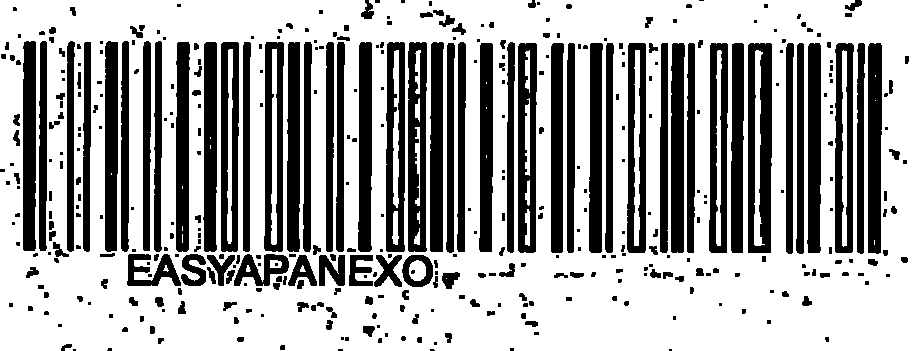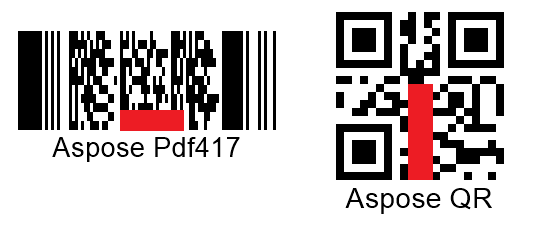Read Damaged or Distorted Barcodes
Read Barcode Images with Gaussian Noise
Gaussian noise is one of the most frequent distortions that may affect the quality of barcode images. The most crucial problems arise in cases when barcode images are monochrome or when the distortion grain is much larger than the minimal barcode element. To mitigate such negative effects, it may be useful to apply median filtering methods that are suitable for both 1D and 2D barcodes. Although median filtering methods also introduce distortions by eliminating barcode elements together with noise, they still may be succeed in improving readability of key barcode modules.
Median Filtering for 2D Barcodes
In Aspose.BarCode for C++, median filtering can be implemented using a special property called AllowMedianSmoothing and setting the median filtering window in the MedianSmoothingWindowSize parameter. Unlike 1D barcodes, automated selection of a suitable median filtering window is not supported for 2D symbologies.
Median Filtering for 1D Barcodes
One-dimensional filtering for linear barcodes can be set using a parameter called AllowSaltAndPaperFiltering. In this case, the filtering window size is selected automatically.
Median Filtering for Postal Barcodes
One-dimensional median filtering for postal symbologies can be performed using the AllowMicroWhiteSpotsRemoving property. The size of the filtering window is set automatically.

Filter Out White Spots
The presence of white spots in barcode images is a frequent problem that appears while sending documents with barcodes through fax transmission. To mitigate this issue in Aspose.BarCode for C++, it is possible to use a special setting called AllowWhiteSpotsRemoving that allows filtering out not all Gaussian noise but only white spots.

Reduce Barcode Image Size to Eliminate Visual Artifacts
In some cases, distortions caused by excessive scaling of a barcode image can be mitigated by reducing the scale space. In Aspose.BarCode for C++, it can be done using a special setting called AllowDecreasedImage. Its purpose is to reduce the size of an image and in this way, to facilitate barcode reading by eliminating visual artifacts.

Read Barcodes with Erased or Displaced Bars
While scanning or sending barcode images using fax transmission, the problem of displaced or erased bars in 1D barcode labels often appears, especially, in those printed out using ink-jet printers. To resolve this issue, Aspose.BarCode for C++ provides two settings called AllowOneDWipedBarsRestoration and CheckMore1DVariants that allow selecting the most suitable recognition option according to the checksum value and other barcode elements. However, it should be noted that enabling these settings may result in incorrect recognition of 1D barcodes.

Read Evidently Incorrect Barcodes
In cases when it is necessary just to detect the presence of barcodes regardless of their validity and corresponding recognition correctness, it is possible to enable two special settings called AllowIncorrectBarcodes and ReadTinyBarcodes. The first one is used to attempt performing partial barcode recognition even if the reading process has provided incorrect results; in this case, the barcode data is decoded with the Confidence level being None, which means that the correctness of recognition is not guaranteed.
The ReadTinyBarcodes option facilitates reading small barcode labels in large images. It is ignored if AllowIncorrectBarcodes is set to True. However, enabling this parameter may result in recognizing false barcodes in place of actual text or tables.

Read Severely Distorted QR Codes and Micro QR Codes
Aspose.BarCode for C++ allows reading severely corrupted QR Code and Micro QR Code labels. This can be enabled by setting the AllowQRMicroQrRestoration parameter.
